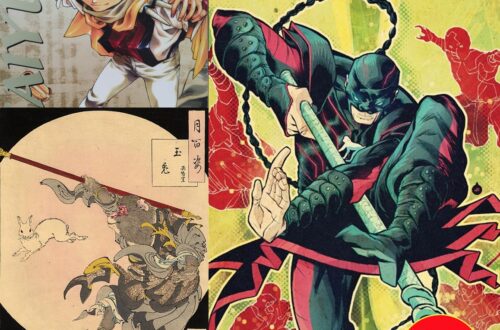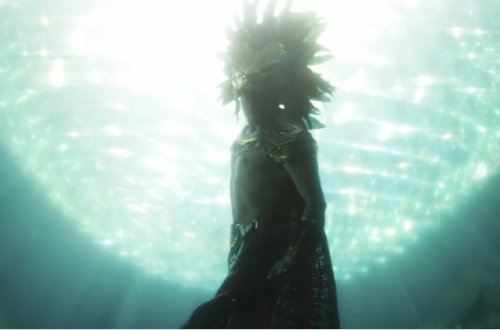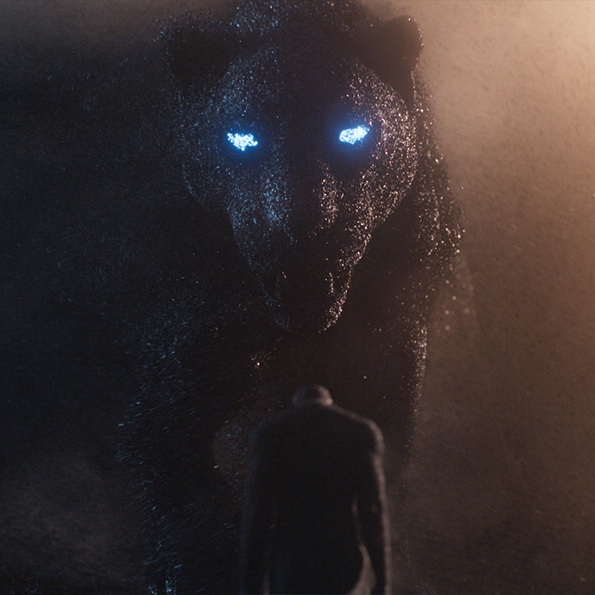
Bast: The Goddess of Black Panther and Cats
Agility, strength, intelligence, courage—Black Panther embodies all these feline qualities and more. These fantastic powers are bestowed upon the protector of Wakanda by the will of the panther goddess, Bast.
Bast was indeed a deity worshipped in ancient Egypt, but Marvel took a slight poetic license in portraying her. They have slightly magnified the proportions of the animal she represents because Bast wasn’t the panther goddess; she was, in fact, the cat goddess. It must be admitted that T’Challa wouldn’t have had the same majestic effect if he were called “Black Kitty.”
The Land of Pharaohs and Cats
The Egyptians are famous for their zoomorphic deities, which means they had gods with certain animal parts (usually the head). As a result, the Egyptians saw animals as manifestations of divinity itself. The cat goddess, known as Bast or Bastet, among many other names, was one of the most popular and important deities in the Egyptian world. Worshiping cats wasn’t just beautiful but also practical: in ancient times, the presence of cats could make a difference between life and death. After all, who else could keep venomous snakes and mice away from grain reserves, thus preventing famine and plagues?

The cult of Bastet originated in Lower Egypt, in the Nile Delta, and its main center of worship was a dream come true for any cat lover—a city overflowing with felines: Per-Bastet, the House of Bastet (known as Bubastis in Greek and Tell Basta in Arabic). The cult of the cat goddess flourished mainly during the 22nd dynasty (945-720 BCE). These pharaohs of Libyan origin adored their felines so much that one of these kings even had the adorable name of Pa-Miu, “The Kitty” (773-767 BCE).
Just like in Wakanda, Bast was a solar protective deity, but she was also the goddess of fertility, childbirth, child-rearing, dance and music. All worshipers practiced these activities during the festivals held in her honor.
Her cats were believed to possess mysterious spiritual powers and represented the life force after death, qualities that have also been attributed to the Marvel Black Panther. We all felt our hearts tighten when T’Challa encountered his father and the previous Black Panthers in the ancestral plane.
The Kitty and the Lioness
“In my culture, death is not the end. It’s more of a stepping-off point. You reach out with both hands and Bast and Sekhmet, they lead you into a green veld where you can run forever”, T’Challa explains to Natasha in the film “Captain America: Civil War”. Sekhmet, the lioness goddess, appears to have also made her way from Egypt to Wakanda. And it’s no coincidence. These two deities have always been closely connected, to the point where it’s uncertain if they were originally a single entity and later differentiated, with Sekhmet (whose name, not surprisingly, means “The Mighty”) embodying the fierce and warlike characteristics of a lioness, while Bastet represents the more protective, yet equally proud, nature of a cat.
Sekhmet was the goddess who accompanied the king into battle, and the pharaoh who worshipped her more than any other was Amenhotep III of the 18th dynasty (1390-1352 BCE), who ruled over both Upper and Lower Egypt and dedicated hundreds of statues to the goddess.
Bast Conquering the Mediterranean
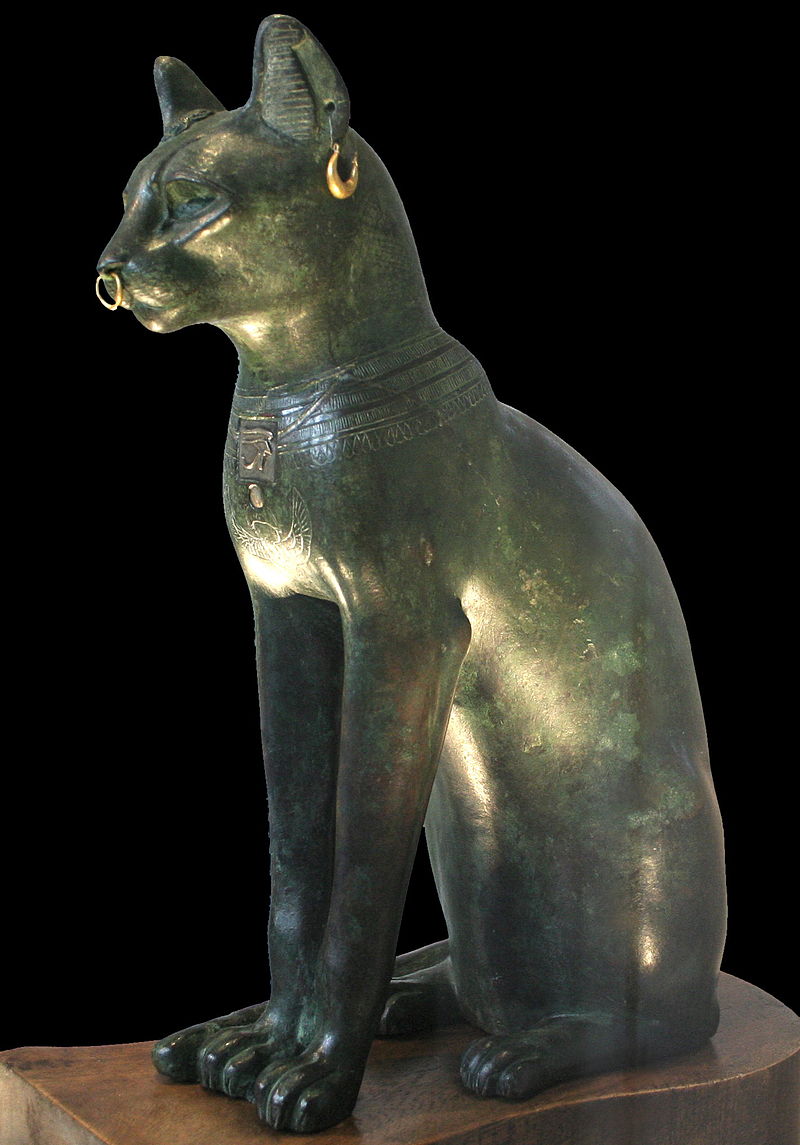
When the Greeks (332-30 BCE) and later the Romans (30 BCE – 395 CE) arrived in Egypt, the cult of Bast did not lose its popularity. Without much hesitation, the Greeks and Romans identified the cat goddess with their own Artemis/Diana. After all, both were hunters and proud protectors, especially of cubs and children. They assisted in childbirth, and even Artemis, when necessary, assumed the form of a cat.
There was another Egyptian deity who found great fortune in the Roman world, and that was Isis. Having many similarities to Bast, the pragmatic Romans often merged the worship of these two goddesses into a single cult. Sometimes, to ensure fairness, they even included Artemis in the mix.
The famous Pax Romana established by the Empire was a golden period for cats, who thrived throughout Europe alongside the worship of their goddesses.
Miniature Panthers: Black Cats
The idea of transforming Bast into a black panther in Marvel didn’t come out of nowhere. Black cats were the most sacred of all. In antiquity, black specimens of every animal species were always held in high regard because they were believed to have a special connection with the gods.
The mere presence of a black cat was enough to ward off evil. They were considered the best at warding off diseases and, if one appeared in a dream, prosperity, and a good harvest were assured. Bast transformed from a solar deity into a lunar deity through their association with Artemis and Isis. The blackness of a cat’s fur became a piece of the night in which the goddess kept watch, shining with stars and magic. The color black was particularly sacred to Isis, known as the “Queen of the Black Mantle,” and a special order of her priests was the Melanephoroi, the bearers of black. In short, from 500 BCE onwards, black cats were the most pampered in the Empire.
Then Christianity arrived. All pagan cults were banned and believers were persecuted. From the 4th to the 5th century CE, there was a true demonization of the color black, which was so common in pagan religion. Christians even turned the gods into demons. Their hatred was particularly directed towards the cults of Diana, which were exclusively female, and thus the fury of the fanatics also fell upon cats. Black cats, once closest to the goddess, were now personified demons, carriers of misfortune.
In 1233, Pope Gregory IX even issued the bull Vox in Rama, a bull that gave divine sanction for the extermination of cats, especially black ones, and their owners.
During the Middle Ages, hundreds of women were burned at the stake on charges of witchcraft and thousands of cats were exterminated. Interestingly, shortly after these massacres, famines, and plagues occurred. It was certainly not the posthumous revenge of devil worshippers. The most fanatical Christians did not realize that they were paving the way for mouse invasions by exterminating cats.
Fortunately, although with ups and downs throughout history, black cats have once again become the Black Panthers of our homes.
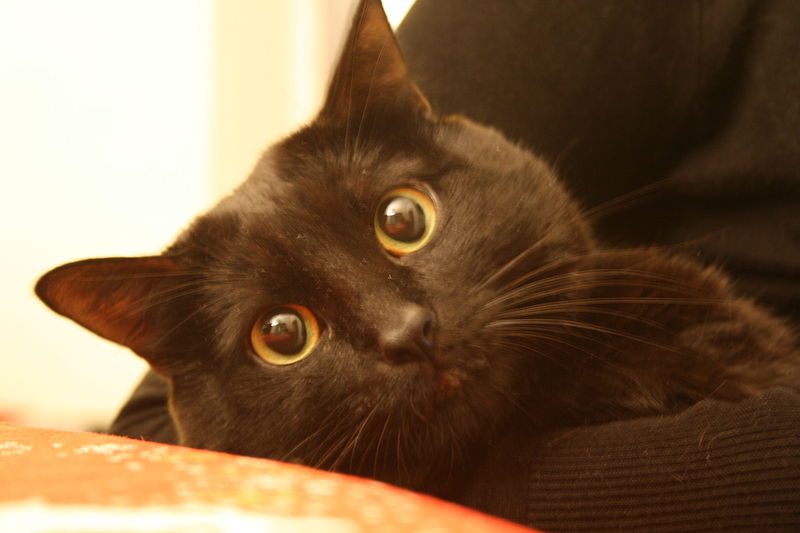
Share with us on our social media if you are a worshiper of your cats!
Here you can also find the Italian version of this article.
Sources
- H. D. Bertz, The Greek Magical Papyri in Translation, University of Chicago Press, Chicago, 1992
- K.M. Briggs, Nine Lives: The Folklore of the Cat, Pantheon Books, New York, 1980
- C. Claremont, Marvel Encyclopedia – New Edition, Dk pub, 2019
- R. Darnton, The Great Cat Massacre and Other Episodes in French Cultural History, Penguin, Harmondsworth, 1984
- D. W. Engels, Il Gatto – è tutta un’altra storia, Piemme, Milano, 2019
- Erodoto, Le Storie
- E. Gibbon, Declino e caduta dell’Impero Romano, Mondadori, Milano, 1990
- M. Howey-Oldfield, The Cat in the Mysteries of Religion and Magic, Castle Books, New York, 1956
- J. Malek, The Cat in Ancient Egypt, British Museum Press, Londra, 1993
- K. Razavi-Shearer, The Lioness and the Kittycat: Egypt’s Great Feline Goddesses, Sekhmet and Bastet, University of Colorado Boulder, 2013
- N. E. Scott, The Cat of Bastet, The Metropolitan Museum of Art Bulletin, vol. 17, n. 1, 1958, pp. 1-7



